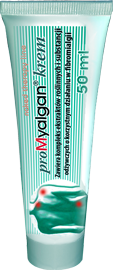Indigenousness and History of Pineapple
The genus Ananas is recognized among Bromeliaceae by the characteristic inflorence, which is fused into a syncarp, a unique dense rosette of scape-wide leaves and medium to large fruits. Cultivated pineapple was first described and named karatas or ananas at the end of the 17th century by Charles Plumier on the island Hispaniola part of Antilles (located between Cuba to the west and Puerto Rico to the east).
Pineapple fruit was brought to Europe from South America by Christopher Columbus and very fast became popular as exotic and extravagancy fruit served on the most elegant and lavish banquets. Pinneapple cultivation expanded from South and Central America over South-East Asia, Australia, and Africa, today. Pineapple became so popular because of very pleasant taste. This made this fruit to became 6th top selling fruit by value with global annual pineapple production of 26 million ton. The good taste is not the only aset of pineapple fruit. It consumption rises due to numerous helth benefts.
Pineapple Nutritional Constituents
Pineapple fruit provides numerous nutrients.
One cup of fresh pineapple chunks contains approximatelyTrusted Source:
- 82 calories
- 0.2 grams (g) of fat
- 0 g of cholesterol
- 2 milligrams (mg) of sodium
- 21.65 g of total carbohydrate (including 16 grams of sugar and 2.3 grams of fiber)
- 0.89 g of protein
As a percentage of your daily requirements, the same amount of fresh pineapple chunks provides:
- 131 percent of vitamin C
- 2 percent of vitamin A
- 2 percent of calcium
- 3 percent of iron
Pineapple is also a source of important vitamins and minerals, including:
- thiamin
- riboflavin
- vitamin B-6
- folate
- pantothenic acid
- magnesium
- manganese
- potassium
- beta-carotene and other antioxidants
Fresh pineapple is the only known source of an enzyme called bromelain, which might play a role in a range of different health benefits.
Pineapple benefits
Eating fruits and vegetables of all types has long been associated with a reduced risk of many lifestyle-related health conditions. Many studies have suggested that increasing consumption of plant foods like pineapples decreases the risk of obesity, overall mortality, diabetes, and heart disease. It also promotes a healthy complexion and hair, increased energy, and an overall lower weight.
- Consuming pineapple can help in a number of health situations, including asthma and diabetes
- One cup of pineapple provides 82 calories and 131 percent of your daily vitamin C requirement
- Pineapple added to various dishes and salads "smooths" and makes their taste more attractive
- Only ripe fruits should be harvested, because after picking they will not ripen









